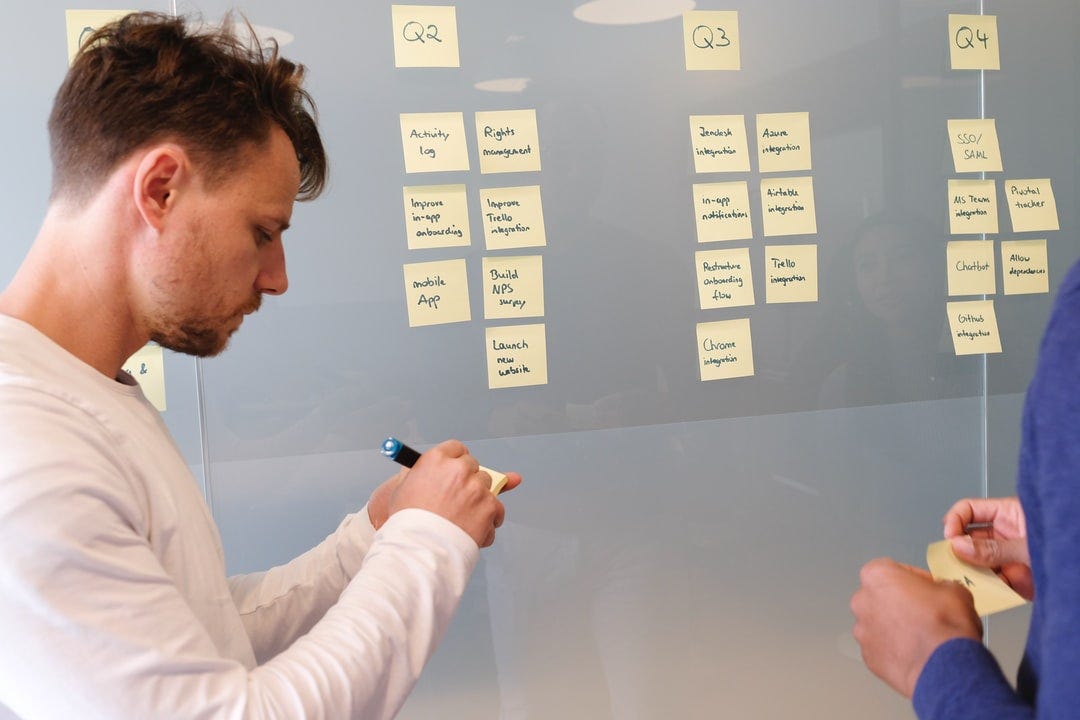Imagine buying and spending considerable time and resources on a new car only to find out that it doesn’t suit your needs. It’s the same with business ventures; without a POC (Proof Of Concept) , you might end up investing in something that doesn’t work.
A POC can take many forms, but typically involves building a prototype or minimum viable product (MVP) to test the viability of a concept. The goal is to answer key questions about the feasibility of the product or service and to gather feedback from potential customers.
In this article, we will discuss:
- What is a proof of concept?
- The different types of POCs
- The benefits of conducting a POC
- How to create a successful POC
Let’s dive in!
What Is A Proof Of Concept?
A proof of concept (POC) is an early stage demonstration that something will work as intended. It’s used to verify whether an idea or technology can achieve the desired outcome. A POC is often the first step in verifying whether an idea or technology can achieve the desired outcome – and, as such, it’s critical to the success of any new venture.
POCs can be used to test everything from technical feasibility to market demand. They are an essential part of the product development process and can help reduce the risk of failure for new products and services.
For example, let’s say you have an idea for a new app that you think will be the next big thing. Before you invest time and money into developing the app, you first want to verify that people will actually use it. This is where a POC comes in.
You can create a very basic version of your app and release it to a small group of users to see if they find it useful. If the app is successful with this initial group, then you can proceed with developing a more complete version of the app. If not, then you can save yourself a lot of time and money by scrapping the project altogether.

However, a proof of concept does more than that. In order to reduce unanticipated risk, a POC gathers user comments and insights from your team members, including those who might not have otherwise contributed.
POC is crucial to the process of developing new products in a variety of sectors and fields, including:
- Application Development
- Commercial Development
- Project Administration
- Among other industries, manufacturing, IT, healthcare, and cybersecurity.
Different Types Of POC
POC or Proof of Concept is a small exercise or test to verify that something can be done. A POC is usually the first step in a larger project, and is used to show that the main concept of the project is feasible. There are different types of POCs:
1. Technical POC
When starting a new project, there are often many technical risks. A technical POC is used to mitigate these risks by verifying that the technology stack can support the project requirements. This type of POC is usually done by a small team of engineers, and is focused on solving a specific problem.
2. Business POC
A business POC is used to validate a business idea or concept. This type of POC is usually done by creating a prototype or minimum viable product (MVP). The MVP is then used to gather feedback from potential customers. This feedback is then used to validate the business concept and make necessary adjustments.
3. Marketing POC
A marketing POC is used to test a new marketing strategy or tactic. This type of POC is usually done with a small group of people in a controlled environment, such as a focus group. The goal of a marketing POC is to gather data that can be used to make decisions about launching the new marketing strategy on a larger scale.
4. Financial POC
A financial POC is used to test the feasibility of a new business model or investment. This type of POC is usually done by creating a financial model that projects the expected profitability of the venture. The goal of a financial POC is to show that the concept is viable and worth investing in.
POC vs Prototype vs MVP
POC, Prototype, and MVP are often used interchangeably, but there are some important distinctions.
Building a prototype and a proof of concept may seem similar, but there are certain differences and each has a different purpose. A modest project to test the concept is the POC. POC is only there to demonstrate that a product notion is both functional and able to be developed further.
Prototyping is yet another crucial task. To assist envision how a product will operate in the actual world, prototypes are made. It demonstrates layout, navigation, design, etc. As a result, a prototype demonstrates how a product is manufactured, whereas a proof-of-concept shows that a product idea is feasible.
This does not imply that these two ideas are exclusive to one another. They connect on some level. This is due to the fact that proof of concept allows users to provide feedback to the team, enables them to research cutting-edge technology, and, of course, demonstrates to investors and decision-makers that the concept is viable. Frequently, a prototype is made once the POC has shown the proposal is viable.
On the other hand, an MVP is an early version of a product that has the core functionality. The main purpose of releasing an MVP is to gain user feedback about the product. Based on this feedback, the product can be improved and new features can be added.

The biggest difference between POC vs Prototype vs MVP is that a POC is only focused on demonstrating that a concept is feasible, while a prototype also demonstrates how the product will be manufactured. An MVP is focused on getting user feedback to improve the product.
Basically, POC is a way of verifying that an idea can work. A prototype helps to understand how the product will work in reality, and MVP is the first version of the product with only core functionality.
The Benefits Of Conducting A POC
There are many reasons to prioritize conducting a POC. Let’s take a look at some of the most compelling benefits:
1. It’s your secret to a terrific pitch.
As we always stress on our blog, narrative is a crucial component of strategy for startups, both for pitching investors and for your brand’s and marketing activities from launch to market and beyond. Consider this. We simply adore stories as humans.
What does all the information out there thus suggest you do when you are preparing your ideal pitch to investors?
Obviously, to tell a narrative. You have a great tale to tell. When you’re sharing your brilliant concept, you need to encourage your audience to “lean in.” You’ll essentially give an investor a tale when you go to sell them your product. Not just any story, though, but one which is totally yours.
Your brilliant team of software developers, growth hackers, and business whizzes; your product and the issue it will answer; and about you as a successful modern entrepreneur with the big idea and the guts to bring it to reality.
2. It allows you to validate your idea quickly and cheaply.
The startup space is full of risk. There are no guarantees that your product will be a success, no matter how good it is. This is why it’s important to validate your ideas as early as possible, so that you can make sure you’re on the right track before sinking too much time and money into development.
A proof of concept allows you to do this quickly and efficiently, by testing out your idea on a small scale before committing to a full-blown product. This way, you can make sure that there is an actual demand for your product, and that it is feasible to develop.
3. It builds confidence with investors.
Investors are always looking for ways to reduce risk when investing in startups. A proof of concept can be a great way to do this, by showing that your idea is viable, and that there is already interest from potential customers.
This can give investors the confidence they need to invest in your company, and can help you secure funding more easily.
4. It helps you attract talent.
Building a great team is one of the most important things you can do for your startup. And a proof of concept can be a great way to attract top talent, by showing that your idea has potential, and that there is already interest from customers.
This can help you not only attract the best developers and marketers, convince them to join your team instead of working on their own project; but also make sure that they will stay.

5. It gives you a competitive advantage.
In the startup world, being first to market is often crucial to success. If you can validate your idea quickly and efficiently with a proof of concept, you’ll have a head start on your competition.
This can give you the time you need to build a great product and attract customers before your competitors even know what you’re working on.
How To Create A Successful POC
Although defining your company concept can seem like an easy step in the development process, it takes more than just verbalizing it to make it real. Let’s walk through the steps.
1. Outline your business concept.
As a first step, you should:
- Use research to pinpoint the issues that your target audience has, then demonstrate how your solution will resolve those issues.
- Describe how you’ll put your concept into action.
- Describe the long-term goals that your concept will help to achieve.
Your stakeholders or investors will find it easier to follow the rest of your presentation when you start your proof of concept with a precisely defined notion.
2. Map it out.
Next, you need to establish what a successful POC looks like for your business. This will help you set achievable goals and benchmarks for your team. To do this, ask yourself:
- What are the core features of my concept?
- How will my concept be delivered to customers?
- What are the key steps in the customer journey?
Once you have answers to these questions, you can start mapping out what success looks like for your POC. For example, if one of your core features is a new payment system, success might look like having a working prototype that integrates with your existing systems and can process payments.
3. Gather the right team.
Assembling a strong team is critical to any business venture, but it’s especially important when launching a POC. Why? Because you’ll likely need to move quickly and efficiently while also keeping costs low. The ideal team for a POC should be small (no more than 5-7 people), nimble, and able to execute on your vision.
Your team should be accountable to you and your stakeholders, and each team member should have a clear role to play in the POC. For example, if you’re working on a new app, you’ll need someone with experience in app development, UX/UI design, and marketing.
4. Set a timeline.
One of the biggest mistakes you can make when launching a POC is not setting a clear timeline. This can lead to your team feeling overwhelmed and stressed, which will impact the quality of their work. To avoid this, sit down with your team and agree on realistic deadlines for each stage of the POC process.

5. Invest in the right apps
There are a number of applications and software programs that can help you launch your POC quickly and efficiently. Before investing in any tools, though, make sure they align with your goals and timeline.
Our Day.io project time tracking app that can help you stay organized and on track, and Trello is a great tool for managing tasks and to-do lists. It provides transparency to what everyone on your team is working on at any given time.
6. Get feedback early and often.
One of the benefits of launching a POC is that it allows you to get feedback from customers early on in the development process. This feedback is invaluable as it can help you refine your concept and ensure that it’s solving the right problem. To gather feedback, you can:
- Conduct user testing with potential customers.
- Collect customer surveys after they’ve used your product or service.
7. Be prepared to pivot.
Even with the best planning, there’s always a chance that your POC won’t go as expected. If this happens, don’t panic – instead, be prepared to pivot. This might mean making changes to your concept or timeline, but it’s important to be flexible in order to ensure the success of your POC.
8. Celebrate your successes – and learn from your failures.
Once your POC is complete, take a step back and assess your progress. Did you achieve your goals? If so, congratulations – you’ve taken a big step towards launching your business!
If not, that’s okay too. The important thing is that you’ve gathered valuable insights that you can use to improve your chances of success next time around.

Final Thoughts
A proof of concept can be a great way to validate your startup idea quickly and efficiently. It can also help you attract investors, talent, and give you a competitive advantage. If you’re thinking about starting a company, don’t forget to test your ideas with a POC first.
Having the right team in place, setting a clear timeline, and gathering feedback along the way will help you increase your chances of success.
